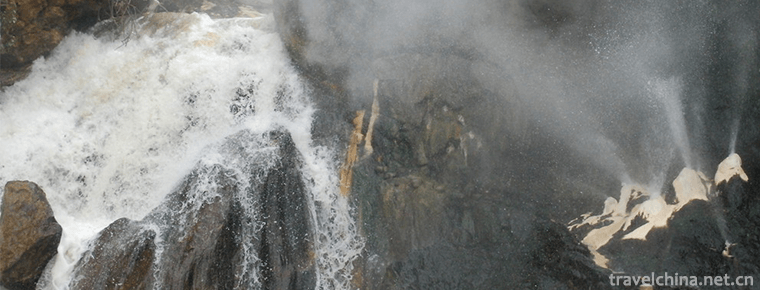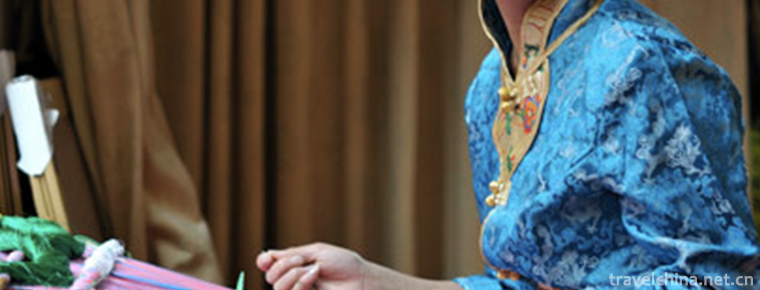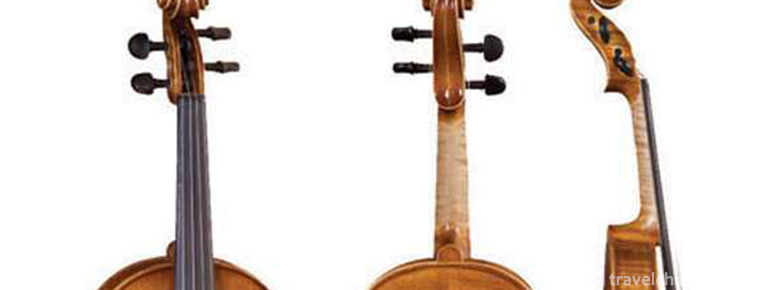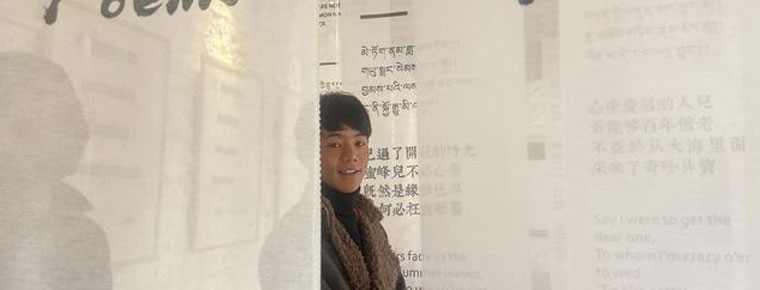Yongxin Drum
Yongxin Drum
Yongxin Xiaogu is one of the traditional operas in Ji'an City, Jiangxi Province, which originated from Taoism. Legend has it that it was formed in Yongxin, Jiangxi Province during the reign of Qingdaoguang. In the early days, the blind artists in the nursing homes for orphans, widows and disabled people sang drums to make a living. Later, Yongxin's blind artists switched to the accompaniment of small drums and changed their linguistic tone and performance style. They sang some short pieces adapted from operas and novels, gradually developed into compiling and singing long lyrics, and formed a local style of music .
In November 2014, Yongxin Drum declared by Yongxin County of Jiangxi Province was approved by the State Council and listed in the fourth batch of representative projects of national intangible cultural heritage.
historical origin
According to Yongxin County Chronicle, the singing horn was produced in the Qianlong period (1740). At that time, in the north gate of Yongxin County, there was a "Duan Entang", in which some helpless blind, deaf and mute disabled people were specially provided. The drum artists came from the blind people in this "St. Entang". Ouyang Cheng, the grandfather of Yongxin Xiaogu, was born in 1722 in Qingling village of Yange, Nanxiang, Yongxin. When he was young, he read some poems and books. After a serious illness, he became blind and was sent to the "Sheng Entang" for support. He was unwilling to enjoy his achievements and play his talents. He changed the fishing drum made of snakeskin to that made of cowskin. With red rope tied to the waist, so that the drum tone is thick and magnificent, durable, easy to carry and sing, and then with a small bamboo holding on the left hand, with a pair of small bamboo board on the right hand, playing a board with eyes, singing colorful. Ouyang Cheng, relying on his memory, changed the folk stories and operas he had read in his youth into small drum lyrics. He laid great emphasis on the appetite (love) of the local masses at that time and developed into a unique Yongxin sound with strong local characteristics. Yongxin had been the name since its inception in the early morning until 1953. Up to now, the local group still has the name of Yongxin, especially the Yongxin people who travel abroad will ask about Yongxin when they return home.
In April 1953, Yongxin Cultural Museum held the first class for educators and artists. Comrade Zhang Tao, formerly the propaganda minister of Yongxin County Committee and later the vice-chairman of Jiangxi Provincial Literary Federation, observed that "Yongxin singing trumpets are very distinctive and should be well excavated and sorted out... In the full commentary (voiceover) countries are big drums, only Yongxin is small drums, it is called Yongxin small drums. Since then, Shuixin's trumpet has been named Yongxin Drum.
Xiaogu, originally known as "singing horn sound", is a folk art for blind artists to make a living. In the early period, it was only popular in Yongxin County, but later it was popular in several counties of Ji'an City. According to textual research, it originated in the reign of Qianlong in the Qing Dynasty (around 1740). At that time, Hubei was hit by a huge flood. A group of drum artists fled to Yongxin and lived in the "Saint En Tang" at the North Gate. "St. Grace's Hall" is a special place for the blind, deaf and dumb people who are helpless. There is a Hubei fishing drum artist named gourd and Mazi who often sings in the streets and alleys, and the blind artist of St. Entang also learns to sing with him. Ouyang Chengxiang, the fastest acceptance, read some poems and books in his childhood, and had a brief understanding of the text. Blind after a serious illness, his parents died one after another and were sent to the "St. Grace Hall". He tried hard to imitate gourd seeds and exerted his talents. He changed the long barrel and fishing drum made of snake skin into flat double-sided drum made of cowskin and tied them to his waist with red rope. It was not only convenient to carry and sing, but also rich and bright in tone and durable. Ouyang Chengxiang, together with other blind people, compiled small drum repertoires of poems and books, folk stories and operas he had read in his childhood, and melted and processed them into small drum music by using laxian chant, lumbering chant, labor chant and folk song minor, which he knew well and loved by the masses.
Yongxin drum, originally known as "Singing Horn Sound", is a kind of traditional opera art spread in Yongxin, which mainly focuses on rap and singing. According to Yongxin County Chronicle, "Singing Horn Sound" originated in the reign of Qianlong in the Qing Dynasty (1740), and its grandfather Ouyang Cheng was born in 1722. He transformed the fishing drum into a small drum made of cowhide to sing and make a living by himself. Future generations of single-handed blind people do not pass on others. It has been handed down to ten generations of blind people for more than two hundred and sixty years since the beginning of liberation. In April 1953, Yongxin County Cultural Museum held the first art class for the blind, renamed "Yongxin Drum". Amateur artist Zhu Yousheng came on stage to rap and changed to stand-up singing, accompanied by a small band.
The drum rap is composed of a single blind person singing by himself. There is no band, but sitting and singing. The rapper holds two small bamboo boards between his left finger and a small bamboo pole in his right hand. A small drum is hung from his chest to his waist with a red cloth. He tells folk stories and plays in a humorous dialect and a singing tune with Yongxin folk songs and trumpets. What happens around Wen and others directly reflects people's living and social conditions, ethical concepts and customs, simple language, concise lyrics, long or short sentences, ridicule and ridicule, short and popular, interesting and interesting. The small drum rap venue is simple, feasible everywhere, and popular with the public. Its rap and singing features are of great artistic research value; its historical value is mainly a simple and easy-to-understand, easy-to-accept, influential and interactive educational method, which integrates ethics and morality into pleasure, plays a certain subtle and incredible educational role, and is rooted in the people. There was a strong flavor of life, and the entertainment style, which was almost well known in Yongxin, made up for the lack of cultural life of the masses at that time. In the mid-1980s, Our County Cultural Museum organized the collection and collation of Yongxin drum materials, which were included in the "Chinese Quyi Records" and did some rescue work. However, with the decrease of blind people, the proper placement of blind people, the rapid change of people's cultural life, and the banning of performing after the Cultural Revolution, the art of drum is facing an endangered state, leaving only the tenth generation of blind people Huang Huahua and amateur artist Zhu Yousheng. It is urgent to rescue and protect Yongxin drum, a folk art.
History of Development
Yongxin Drum has eleven generations of history since it was founded by Ouyang Chengxiang. It has gone through nearly 300 years of storms and rains and still remains in the world. It can be divided into four stages:
A: During the Qing Dynasty (1840-1910)
During this period, 12 blind people in Yongxin learned to sing drums. At that time, they basically sang without white, with some linings in the middle. It mainly relies on entertainment to dissolve ugliness and persuade people to do good. At that time, the popular "Lazy Lady" has always been popular with the masses.
B: Period of the Republic of China (1911-1989)
Due to the development of local opera and the performance of large-scale programs, the short passages of Yongxin Drum can not meet the needs of the masses. Therefore, they began to create a large number of Lianben pieces, in these days, not only singing, but also with Tao Bai, when Tao Bai pull tone, and drama white into one, colorful voice, empty tone, has become a unique flavor.
C: Soviet period (1928-1934)
After Chairman Mao reorganized Sanwan to create Jinggangshan Base Area in 1928, Yongxin and other places successively established the Soviet government and the Soviet government of Hechuan Town to organize training for the blind. They transformed the Yongxin drum to serve the revolution at that time. At that time, a comrade surnamed Liu was sent to create programs for the small drum artists so that blind artists could come to the whole. All over the county to sing and publicize.
At that time, the newly edited small drum programs included "Dividing fields by trenches", "Welcoming the return of water in the White Year", "The Red Army has won the battle" and so on.
D: After the founding of the People's Republic (1950 -)
After the founding of the People's Republic of China, under the guidance of the Party's policy of "letting a hundred flowers blossom, weeding out the old and bringing forth the new", the Yongxin Drum gained the Party's attention and concern.
Yongxin Cultural Museum held two classes in 53-54, and formed a small drum singing team. From Yongxin Tea Picking Troupe, students were appointed to learn to sing Yongxin drum.
Since then, Yongxin Drum has changed from a blind person to a professional actor, adapting the phenomenon of extinction after the death of the blind. Because it is not blind singing, Yongxin Drum has undergone a bold reform, from sitting to standing singing, from one-person performance to multi-person performance, from the original corners of the field, from villages and alleys to streets with musical instruments accompanied, with lighting settings. From then on, Yongxin Drum ascended the hall of elegance.
In 1957, handicraft worker Zhu Yousheng performed Yongxin Drum "Lazy Lady" for the first time on Yongxin stage, which was warmly welcomed by the audience.
In 1965, Zhu Yousheng, on behalf of Ji'an District, first went to the province to participate in the third amateur performance of workers, which was appreciated by the provincial and local literary and artistic circles.
In 1976, Comrade Liu Moving participated in the National Opera performance, which was well received by the people of Beijing.
artistic characteristics
Performing Form
Yongxin drums are sitting and singing by one person. They are mainly talking and singing. The singer holds two small bamboo boards between his left finger and a 7-inch bamboo stick in his right hand. He beats the drum hanging in front of his chest. He sings by himself without accompaniment of musical instruments. Its singing tune includes flat tune (including Allegro) and high tune. Pingqiang is calm and deep, good at expressing humorous and ironic subjects. The small Allegro behind Pingqiang uses faster speed, repeats lyrics, strengthens tone and renders the atmosphere. High-pitched enthusiastic, dynamic, range than flat-pitched active fluctuations, ups and downs, can be long or short, can be rigid and flexible. The repertoire is simple in language and concise in lyrics. It pays neither attention to literary style nor rhythm. It is composed of seven words and four sentences. At the end of each paragraph, there is a trailing tone. It is also fully applicable to local popular expressions, idioms, proverbs and rhymes in local dialects. It is popular with the masses.
Singing Style
The singer's left finger smells two small bamboo boards clipped to his left finger. He holds a seven-inch-long bamboo pole (like chopsticks) in his right hand and sings by himself without accompaniment of musical instruments. Its singing voice is full of ups and downs. It is both humorous and gentle. It can be long or short, strong or soft, sometimes with some colloquialism. Its repertoire language is simple and its lyrics are concise. It makes full use of local popular languages, common languages, idioms, predicates, proverbs and so on.
Local rhyme, with easy to understand, humorous and lively rhythm, makes the repertoire interesting. Small drum singing is everywhere on the stage, in spring and summer, in the streets and lanes or in the sunshine space during the day, in summer and autumn, not only in the hall, but also in the evening to cool the square. Streets and alleys, and even roofs, are not limited by time and space, nor by listening to a lot of restrictions, but more or less, anytime and anywhere, on the contrary. It will attract many people to watch and sing. Sometimes they sing late into the night and until dawn. Soon, Yongxin drum developed into the countryside, and also spread to Taihe, Jinggangshan, Ninggang, Lotus, Anfu, Chaling, Lingxian, Ji'an and other places in Yongxin neighbouring counties.
Singing Characteristics
(1) The means of livelihood handed down by the blind are characterized by their performances. One person sits and sings, one person has many corners, and sings by himself, all depending on his mouth.
(2) The costume props are simple and do not need specific clothes. The singer holds two small bamboo boards between his left finger and a small bamboo pole in his right hand to beat a drum. A small drum is hung from his chest to his waist with red cloth, which is convenient for carrying, walking and singing.
(3) The content of small drums is mostly folk stories, operas and other folk events, which are compiled into small passages to reflect people's living and social conditions, ethical concepts and customs. The content is simple, easy to tell, and easy to understand.
(4) Simple language, concise lyrics, and Yongxin dialect are often used. The sentences can be long or short. They use idioms, predicates, proverbs, local rhymes, Yongxin trumpet consonants and folk tunes, which have local characteristics.
(5) Influenced by the geographical environment, simple, spicy, fun, ridicule and ridicule, soft and moderate rigid, short and popular, interesting, so far, it has developed into a colorful tone.
(5) The rap venue is simple and easy, as long as you can sit down on a stool.
Performing props
1. Small drum: cowhide as drum surface, diameter 11 cm, drum surface 10 cm, thickness 4 cm;
2. Small bamboo pole: 17 cm long;
3. Two bamboo plates: 8 cm long and 5 cm wide.
4. Red cloth 1: hanging drum;
5. One stool
Traditional repertoire
Traditional repertoire includes more than 30 pieces, such as The Story of Flower Selling and Private Visit to Chang'an. During the Second Civil Revolutionary War, the Red Army of Workers and Peasants of China and the Provisional Central Government of the Soviet Republic of China attached great importance to folk art. They organized Yongxin drum artists to talk and sing everywhere, and encouraged the masses to participate in the revolutionary struggle. They compiled songs such as "Down with the Warlord Powers", "Advising White Army Soldiers to Return to Water" and "Riot" to make Yongxin small. Drums are popular in Taihe, Suichuan, Ninggang, Jinggangshan and Anfu. Since the founding of the People's Republic of China, excellent songs such as Brothers and Sisters Delivery of Grain have been created, and the popularity of small drums in Yongxin has been growing.
Inheritance Significance
"Yongxin Xiaogu" was selected as a unique variety of folk art in China. As far as the content of her performance is concerned, she can closely cooperate with policy and politics in propaganda, and the form of her performance is flexible and flexible, which can better persuade people to do good and flog ugliness. Judging from its rich historical origin, the small drum is a popular art among the masses, and it has penetrated into the hearts of the people, and expanded to many counties and cities around Yongxin. Many overseas Yongxin overseas Chinese, once returned to Yongxin, will ask to listen to the first Yongxin trumpet. It is a local product of Yongxin and a fixed dish of their hometown. It has been fundamentally on the red land of Yongxin.
With the progress of the times, the life of the blind has been improved. After liberation, the rule of "only the voice of the trumpet can transmit the blind" has been broken. Thus, the blind drum and the learning drum basically ended. After the reform, professional performances have gradually replaced her vitality with the rapid change of people's entertainment methods. In such an environment and climate, this art of folk art is mostly just a concern of cultural workers, and it has not supported her further development and improvement economically at all.
As a result, the once well-known Yongxin drum is facing a state of endangerment. What should be done now is a "100,000-fire emergency rescue". It's the sending of charcoal in the snow, not the icing on the cake.
Current situation of inheritance
On November 19, 2007, good news came from Jingmen, Hubei Province. Yongxin Xiaogu Baoduo Jimu, compiled, directed and performed by Yongxin County Literary Works Group, participated in the 14th National Star Awards and won the performance award.

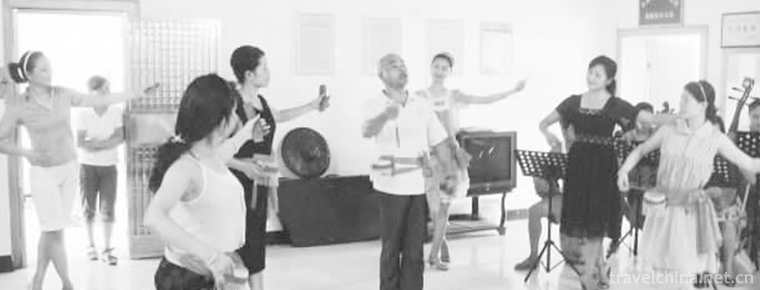
-
Xiangsha Bay Scenic Spot in Dalat Banner Ordos
Xiangsha Bay was opened as a tourist attraction in January 1984, listed as a national line scenic spot by the National Tourism Administration in 1991.
Views: 240 Time 2018-11-29 -
Bali River Scenic Area
Bali River Scenic Spot is a national AAAAA-level tourist attraction with "Global 500 Top" environmental protection. It is located in Yingshang County.
Views: 249 Time 2018-12-08 -
Tengchong Volcanic Hot Sea Tourist Area
The volcanic hot sea is located 20 kilometers southwest of Tengchong County. It covers an area of 9 square kilometers. There are more than 80 large gas springs and hot springs. Among them.
Views: 130 Time 2018-12-12 -
Dongba Valley Scenic Area
Dongba Valley Scenic Area, located at the foot of Yulong Snow Mountain, Yunnan Province, 15 kilometers away from Lijiang River, is a natural ecological Grand Canyon, a rift valley torn apart during th.
Views: 126 Time 2018-12-20 -
Longlishi Sea Scenic Area
Located in Shilin Town, Wansheng District, Chongqing, Longlishi Sea Scenic Area is a karst geological park type natural scenic tourist area with a planned area of 4.7 square kilometers and a distance .
Views: 230 Time 2019-02-06 -
Tibetan knitting and embroidery
Tibetans are good at embroidery and textile, and exquisite craftsmanship adds infinite charm to their costumes, which is the most prominent manifestation of Tibetan.
Views: 136 Time 2019-04-05 -
Chaomong Ancient Bow String Music
Originated in Inner Mongolia grassland, Chaoer art, known as "cultural diamond", is the predecessor of horsehead art and the unique traditional and ancient musical instrument of Mongolian..
Views: 94 Time 2019-04-16 -
Traditional drama
Chinese drama mainly includes opera and drama, and opera is the traditional Chinese drama. After a long period of development and evolution, Baihua Garden of Chinese opera has gradually .
Views: 147 Time 2019-04-21 -
Brewing Techniques of Maotai Liquor
Maotai liquor brewing technology, the local traditional handicraft technology of Maotai Town, Zunyi City, Guizhou Province, is one of the national intangible cultural heritage..
Views: 159 Time 2019-05-29 -
Uygur Dastan
Uygur Dastan is a kind of Uygur singing and playing music. It is a kind of long narrative poem with rap and singing. It is a long poem with complete stories and characters. It is a folk art form with .
Views: 137 Time 2019-06-26 -
The announcer Ding Zhen will not be on duty until half a year later
On December 6, just after yesterday's live media broadcast, Ding Zhen met with more than 20 fans from all over the country to take photos at noon. Ding Zhen is no longer as shy and helpless as he was when he first met a stranger. After half a month's popularity,.
Views: 114 Time 2020-12-06 -
Guangan highway
Guang'an is the transportation hub of Northeast Sichuan Province. The national highway 210, 212, 305 and 318, provincial roads 203, 304 and 18, and county, township and village roads crisscross each other, and the highway network exte.
Views: 144 Time 2020-12-19


